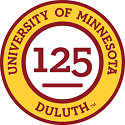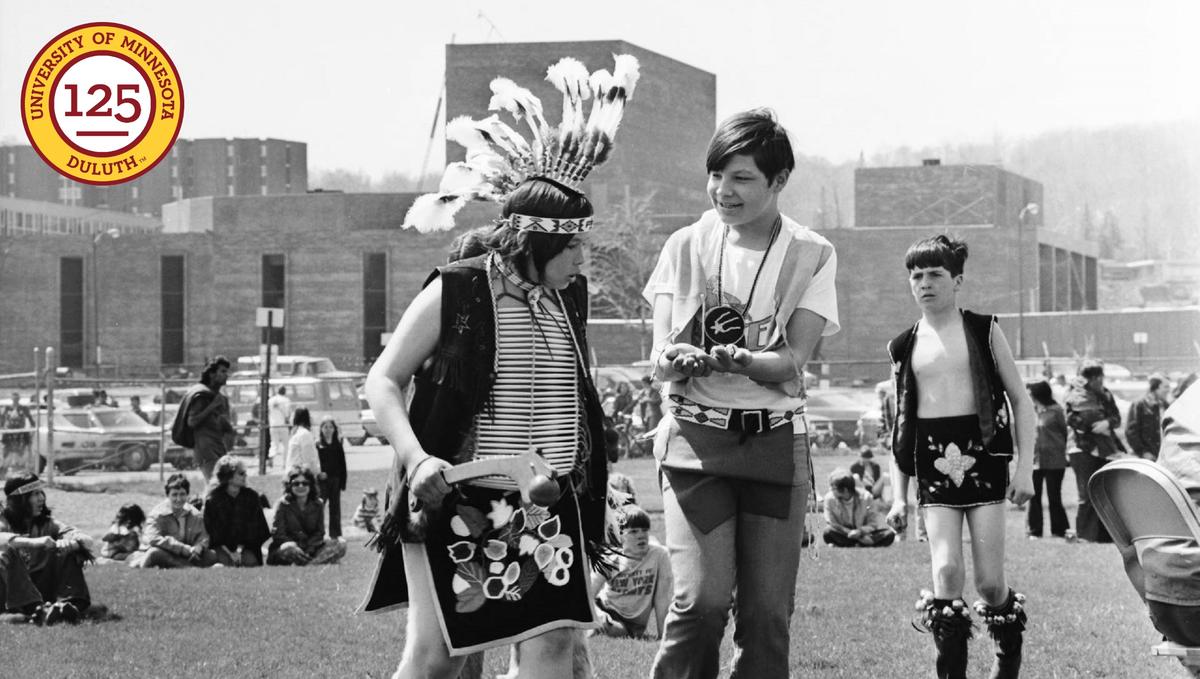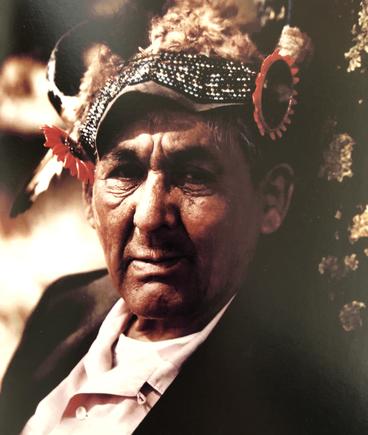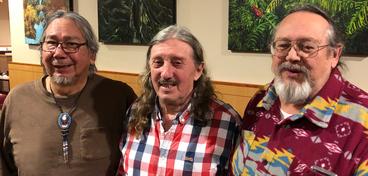In May, 1973, David “Niib” Aubid (AA ‘92, BA ‘12) was a little late to the Kirby Ballroom for the Anishinabe Days Pow Wow. It was a Friday evening, and the room was full.
Niib, who was a UMD student at the time, is from the Mille Lacs Band of Ojibwe. He’s from East Lake, a community that spoke Ojibwe and practiced the cultural ways. That night, he was bringing the pow wow drum and a van full of drummers for the ceremony. Jay Yaag, an elder, and John Martin, an Ojibwe singer who taught traditional songs, were in the group.
On the way to the pow wow, their van had a flat tire. When they took out the spare, it was flat too. They had to roll the tire to the nearest gas station in Cromwell to get it fixed. When they finally arrived, Niib and his group were relieved to see that the festivities hadn’t begun and people were still arriving.
Paul Buffalo, an American Indian elder and spiritual leader from Leech Lake, was performing a ceremony, sanctifying the area. Niib said, “Paul had on a headdress and was shaking a rattle near the floor, blessing the space for the dancers.”
Many were in native dress, a few in full regalia. There were many Shawl Dancers and one of the male dancers was wearing a bustle, a large shield of eagle and hawk feathers, worn at the back.
That pow wow was one of the first Annual Anishinabe Days Pow Wow. Vern Zacher (AA 67 BA‘72) explained, “One week every spring, we held Anishinabe Days.” There were films and speakers each day. In 1975, they brought in Pulitzer Prize winner M. Scott Momaday to talk about his book, The House Made of Dawn.
“It was a strong time for American Indian students at UMD,” Vern said. “It became a focus for students in Minnesota and North Dakota.” UMD has hosted pow wow’s for more than 20 years.
The Early Days
Jeff Savage, along with Niib and Vern, recently shared the story of American Indian Studies at UMD. Jeff is director of the Fond du Lac Cultural Center and Museum, and he attended UMD in the 1970s. The men give a lot of credit to George Himango.
David Niib Aubid, Vern Zacher, and Jeff Savage
George Himango returned from a tour in Vietnam in 1970 and with the encouragement of Ruth Myers, a woman known as the grandmother of American Indian Education in Minnesota, enrolled at UMD.
The year George arrived, only two American Indians had graduated from UMD. George recruited 12 friends to come to UMD, and they put together a student organization, the Anishinabe Club.
Classes and Outreach
Beginning Chippewa was taught by Art Gahbow and Ralph Fairbanks. Those classes were on the fourth floor in Humanities, along with most of the American Indian Studies classes. “We took over a lab. We listened to recordings of people talking in Ojibwe,” said Niib. “The teacher could coach each student, one at a time, through headphones.”
In April 1972, American Indian Studies (AIS) was founded, and by October 1972, it became a program within the Division of Social Sciences. Its first director was Robert Powless, a full-blooded Oneida Indian.
Niib gave high marks to one class, American Indians in the 20th Century. “It was taught by Dr. Powless,” he said. "We learned a lot ... about Hiawatha, the peace chief of the Iroquois tribes, and the Great Law of Peace, the oral constitution of the Iroquois Confederacy." Other classes included Legal Aspects of Indian Affairs, Early Indian-White Relations: An Indian View, Teaching the American Indian Pupil, and Indian-White Relations 1776-1887.
The History and Culture of the Ojibwe class brought in the community. Visitors included Paul Buffalo, Roger Fairbanks, Tim Roufs, Don Murdock, Ruth Myers, Billy Blackwell and Betty Gurno. In addition, students were visited by a dance group with Mary Howes, Roger Shaibaish, and John Martin.
The AIS students were extremely active. George, Vern, Clyde Atwood, and Ray Murdock met with the medical school and social work staff to provide them with greater understanding of cultural differences. George and other students in the program, Ed Howes, Nora Gallaher, and Roberta DuFault, tutored American Indian inmates in Sandstone Prison. Vern remembers, “We went up to Enger Tower one year to protest Columbus Day.” The Wounded Knee occupation in South Dakota in 1972 was in world news and also had the attention of UMD students.
There are a lot of people to thank for the success of the 48-year old AIS program. The first AIS Annual Report is dedicated to George F. Himango and Geography Professor Fred T. Witzig. Vern remembered, “Julia Newels Marshall and women at the Duluth Women’s Club supported American Indian students.” Many more people contributed to its successes through the years, including Rick Smith and the American Indian Learning Resource Center and the directors of the Center for American Indian Health.
The 48-year old AIS program is still strong. The program joins over a dozen American Indian programs on the UMD campus and hundreds of alumni from those programs remember the classes and American Indian traditions at UMD.
About the American Indian Studies Department
Information from this story came from the Archives and Special Collections, Kathryn A. Martin Library, University of Minnesota Duluth.

SEE MORE


